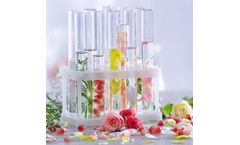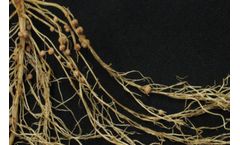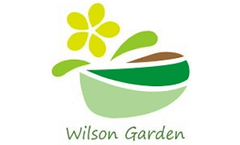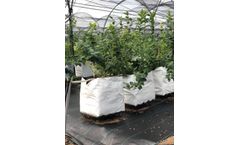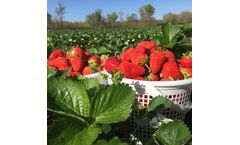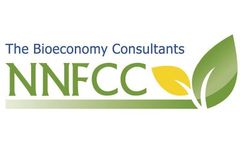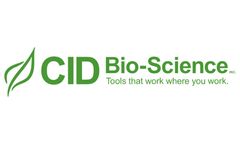Plant Leaf Articles & Analysis
48 articles found
In cosmetics, the application of plant extracts has been particularly popular because of their various advantages and natural nature. Plant Extracts for Moisturizing Skincare relies upon moisturization, and plant extracts are the stepping stones to that. Plant extracts also have hydroxyl groups in the polysaccharides and glycosides that keep water inside them with hydrogen bonds. The majority of ...
Unlike aroma chemicals, which are produced through chemical synthesis, natural aroma chemicals are complex compounds derived from natural resources, including trees, flowers, plants and animals. Their origins can be traced back to the beginning of recorded time. The Egyptians used the tree resins frankincense (olibanum) and myrrh, burned as incense to appease the gods [1]. And the Classic Herbal, ...
Unlike aroma chemicals, which are produced through chemical synthesis, natural aroma chemicals are complex compounds derived from natural resources, including trees, flowers, plants and animals. Their origins can be traced back to the beginning of recorded time. The Egyptians used the tree resins frankincense (olibanum) and myrrh, burned as incense to appease the gods [1]. And the Classic Herbal, ...
What is Leaf tissue testing? Leaf tissue testing is a crucial process for evaluating the concentration of essential elements within plant tissue. Essential nutrients, categorised as micronutrients and macronutrients, play key roles in sustaining the plant’s life cycle. Micronutrients, required in smaller amounts and ...
Whether you are new to growing indoors or a seasoned professional, one thing is for certain – you can’t take your eye off the ball with pest control! One of the most common pests to plague our grow rooms are the white aphid. Secondary to those are black aphids, which are very similar. If you’ve not experienced an aphid attack yet then count yourself lucky. There is no surefire ...
Mealybugs are small but mighty pests that can settle on your plants. If left untreated, they can spell disaster! Nobody wants that now do they!? As with many aspects of growing plants, pest prevention is a great way to minimise the likelihood of infestations. In turn, this saves wasting time and resources treating mealybug populations in your grow space. Although mealybugs can affect outdoor ...
If you’re a cannabis grower, you know that healthy plants are essential for a successful crop. However, even with the best intentions and care, nutrient burn can occur and cause significant damage. Nutrient burn is a common problem that can affect cannabis plants. It leads to a range of cannabis leaf symptoms and ultimately affects the ...
The virus is hosted and spread by a soil-living fungus that colonizes the roots of wheat plants, discolors wheat leaves and stunts plant growth. Microscopic fungal spores containing WYMV can survive in soil for up to 10 years. ...
Opinion piece: sustainability gets supercharged thanks to all-new formulation designed to drive yield As a farmer your job is as simple as it is intensely complex: sustainably produce food to feed the world. A key component of profitable agriculture is using the exact amount of inputs to drive yields. Fertilizer, your largest expense, must be critically timed to achieve the best results. ...
Due to the need for higher temperature, it is necessary to sprinkle some warm water on the leaves regularly. Plants placed in a dry environment can put a layer of wet small gravel in the flower pot to promote the growth of plants. Seedlings are planted from March to April in spring, or preferably from September to October in winter. Sowing before the frost season. In winter, please manage ...
In recent years, the demand for berries, and more specifically blueberries, has increased. This has led to an increase in surface area and cultivation techniques. Soil is no longer a problem thanks to the existence of optimal substrates for growing blueberries. Of all the berries, blueberries require the most consideration for greenhouse cultivation. We are going to see some of them, as well as ...
Fruit growers among other agriculture growers across the world are looking to surmount the challenge of increasing crop production with a dramatic reduction of synthetic agrochemical use and a reduction of environmental nutrient leaching in ground water and surface water sources. Many growers are pursuing ways to integrate more sustainable agriculture practices that will simultaneously enhance ...
Decarbonisation doesn’t just come from paring back industrial activities such as the burning of fossil fuels. In recent years there has been a significant increase in the scrutiny applied to agriculture, as more and more research shows that this sector is responsible for significant carbon emissions. However, reducing emissions is of little use if people can no longer be fed, and so much ...
Currently, agriculture uses seventy percent of the freshwaters, globally. Available freshwater sources will not be enough to increase food production to feed growing populations in the coming decades. Therefore, there is a concerted effort to grow crops with seawater. Hence, scientists are investigating the various challenges involved in growing plants with saline water. These include greenhouse ...
3D assessment of plants became a commonly used technology in plant phenotyping to measure morphological and architectural features of plants. Although, 3D sensors such as PlantEye can be the workhorse for every phenotyping platform, it still lacks the ability to measure changes in color or other spectral information that are an important indicator for the plants physiological ...
It is easy to measure leaves, and they are also the parts of a plant most responsive to their environment. The combination of these two factors makes leaf area measurement extremely useful to scientists and growers. ...
What is Leaf Area? It is easy to measure leaves, and they are also the parts of a plant most responsive to their environment. ...
It is measured as the leaf area (m2 ) per ground area (m–2) and is unit-less. So, a plant with a LAI of 2 has an amount of leaves that can cover a given area two times. ...
It is measured as the leaf area (m2 ) per ground area (m–2) and is unit-less. So, a plant with a LAI of 2 has an amount of leaves that can cover a given area two times. ...
Light spectrums can also be used to manipulate the plants growth cycle for example in plant breeding (see blog post: Light Approaches To Speed Up The Generation Turnover) or secondary metabolite contents (anthocyanins, flavonoids, antioxidants, polyphenols etc.). ...


